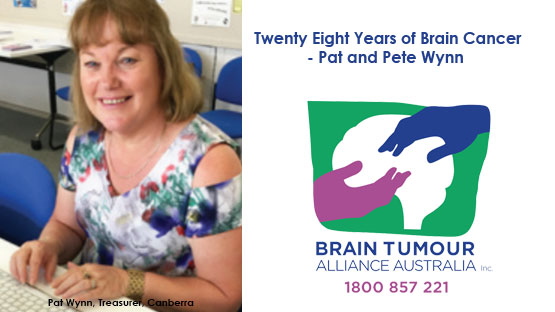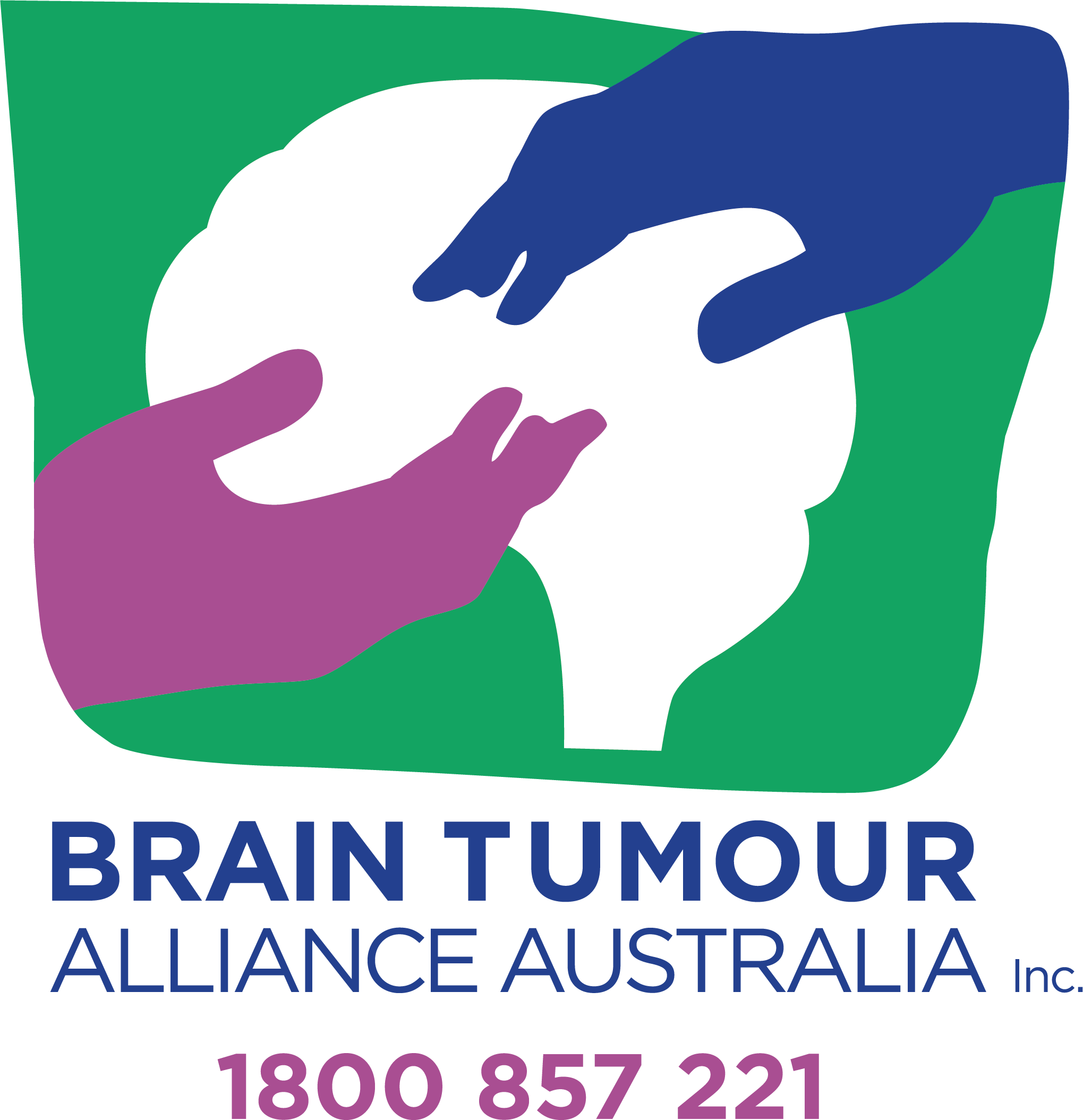
.jpg)
28 years ago, my husband Pete came home from a long day of driving a Petrol tanker. Our two-and-a-half-year-old son and one-year-old daughter were asleep on the lounge.
After walking in through the door and saying some things, that really didn’t make a lot of sense, he crouched down, pointed and started spinning around the room. His brother and sister-in-law were visiting at the time and all of us just watched in shock as he crashed into a metal bin, which held wood for the fire, and fell to the floor into what we now know was a grand mal seizure. The seizure lasted for several minutes. He was foaming at the mouth and going blue from lack of oxygen. When he calmed a bit I turned him onto his side and waited for the ambulance to arrive. I thought he’d had a stroke. I had never seen anyone have a seizure so was surprised when the paramedics told me that was what had happened.
After a CT scan and MRI Pete was diagnosed with a brain tumour. It was graded 2-3 mixed Oligliodendroma and about the size of a small orange in the right temporal lobe. He had surgery on 30 August 1988.
Life as we knew it was over. After 2 weeks in hospital, 6 weeks of radiotherapy, and several more weeks of recovery, Pete went back to work but not to the driving job that he loved. He was to be retrained in the office. That was OK in theory, however, Pete had just had a major operation, his fatigue levels were high, and his frustration levels were higher, as his short-term memory was shot. He was made redundant from that position about 12 months later, to his relief.
Back in those days, the driving restrictions weren’t as conservative or strict as they are now. Within a few weeks, Pete had another job driving for another company delivering, initially, gas cylinders, and then driving gas tankers all over NSW and ACT.
In 1996 Pete had a seizure and was eventually made redundant from that position as well. A series of jobs; both driving and mechanical, over the next 10 years followed. Eventually, he got back into trucks which he was happy with.
In 2004, 16 years later and another son later, a recurrence was discovered on an MRI. We had started to get a bit slack with the annual check-ups and we think he had gone at least 2 years between the last clear MRI and the one with a recurrence. We had started to notice a few things that made us get the test done, falling asleep at the wheel being one of them. Falling asleep at the drop of a hat being another. No seizures.
Another resection by the lovely Dr Chandran, and a slightly higher-grade tumour, of a similar type. It was after this surgery that we were told that this would be how life was now. He would get more tumours and they would eventually kill him. Up to that point, we had no idea that this was a possibility. In hindsight perhaps we just weren’t listening. We were seeing enough doctors.
At the time of Pete’s initial surgery and treatment, there was no treatment other than surgery and radiotherapy. Radiotherapy wasn’t an option again but thankfully there was now Temozolomide. Six months of chemo treatment followed and another redundancy, as truck driving was his job of choice.
By 2014 when Pete started having funny little episodes, with no sign of anything in between, he had managed to get himself into another job driving trucks. The episodes were focal seizures. Thankfully he was with a major company that worked hard to keep him in a job. The focal seizures turned out to be from residual damage from the radiation therapy. No tumour this time. However, in addition to the Dilantin he had been taking for the past 26 years, he started taking Kepra. This drug turned out to be great at controlling the seizures but increased the fatigue, and this means Pete lives in a bit of fog.
However, 12 months later he started having focal seizures frequently and within 24 hours a small tumour had been discovered on a MRI, despite a clear one 6 months earlier. A recurrence in exactly the same place, although caught very early and measured only 5mm and a lower grade than the 2004 tumour. The dose of Kepra was doubled and so did the side effects.
Another surgery, 5 days in hospital, and the 10-year suspension of his truck driving licence. He was made redundant again in October 2016 from another job he loved. Truck driving is now a thing of the past.
Since the last surgery in August 2015 Pete has only worked 6 weeks, being unable to work quickly enough or stay focused on what he needs to be doing. He gets frustrated and has trouble with motivation. Fatigue is an everyday battle.
Brain tumours are not always a death sentence, but they are life-changing – for all of us involved in Pete’s life.
(This story was first published in BTAA Magazine, Issue: May 2017)
If you would like to share your story with BTAA or are looking for ways to get involved, reach out to us via email or the free call number.
To return to the BTAA homepage, please click here.

